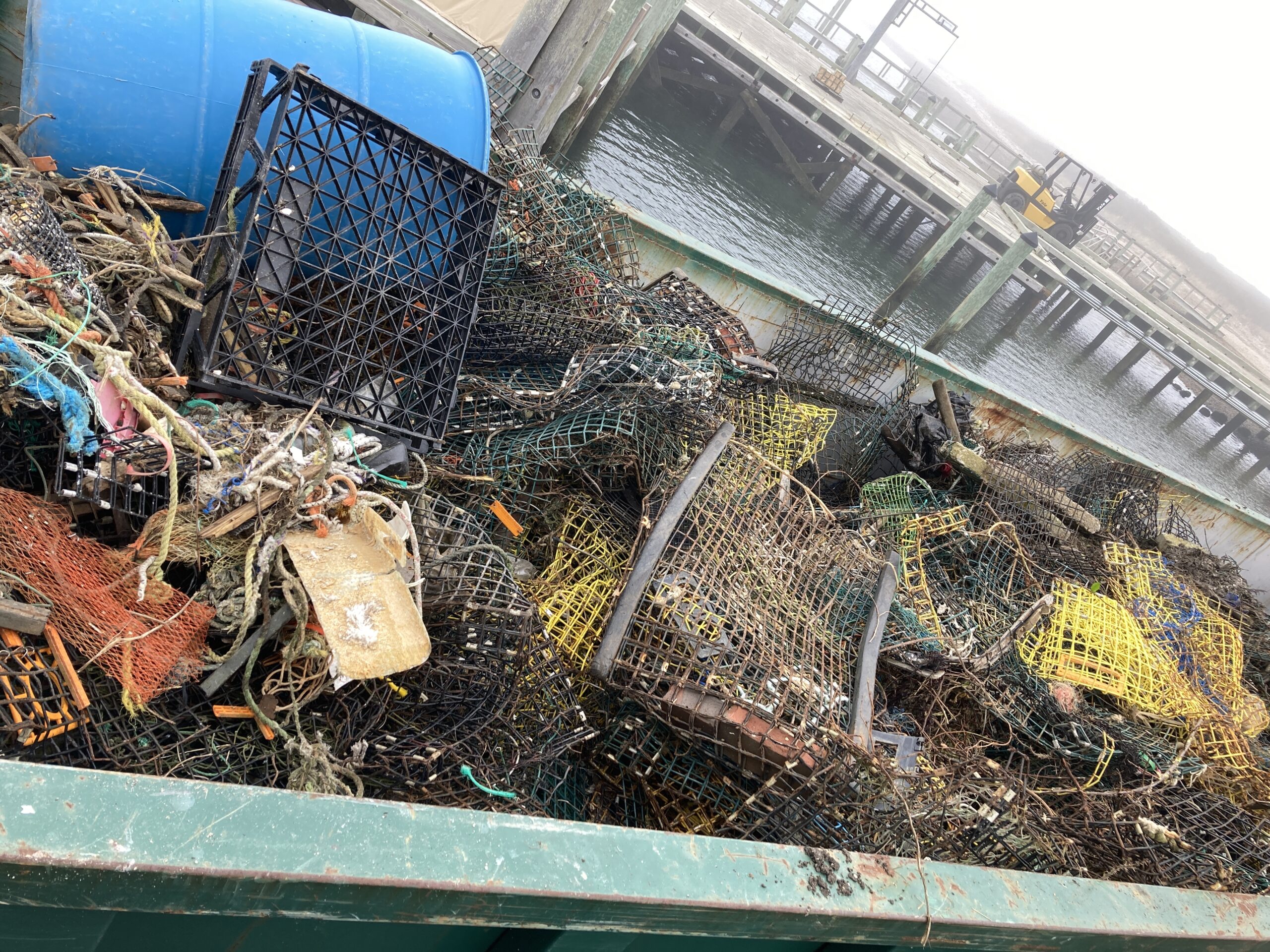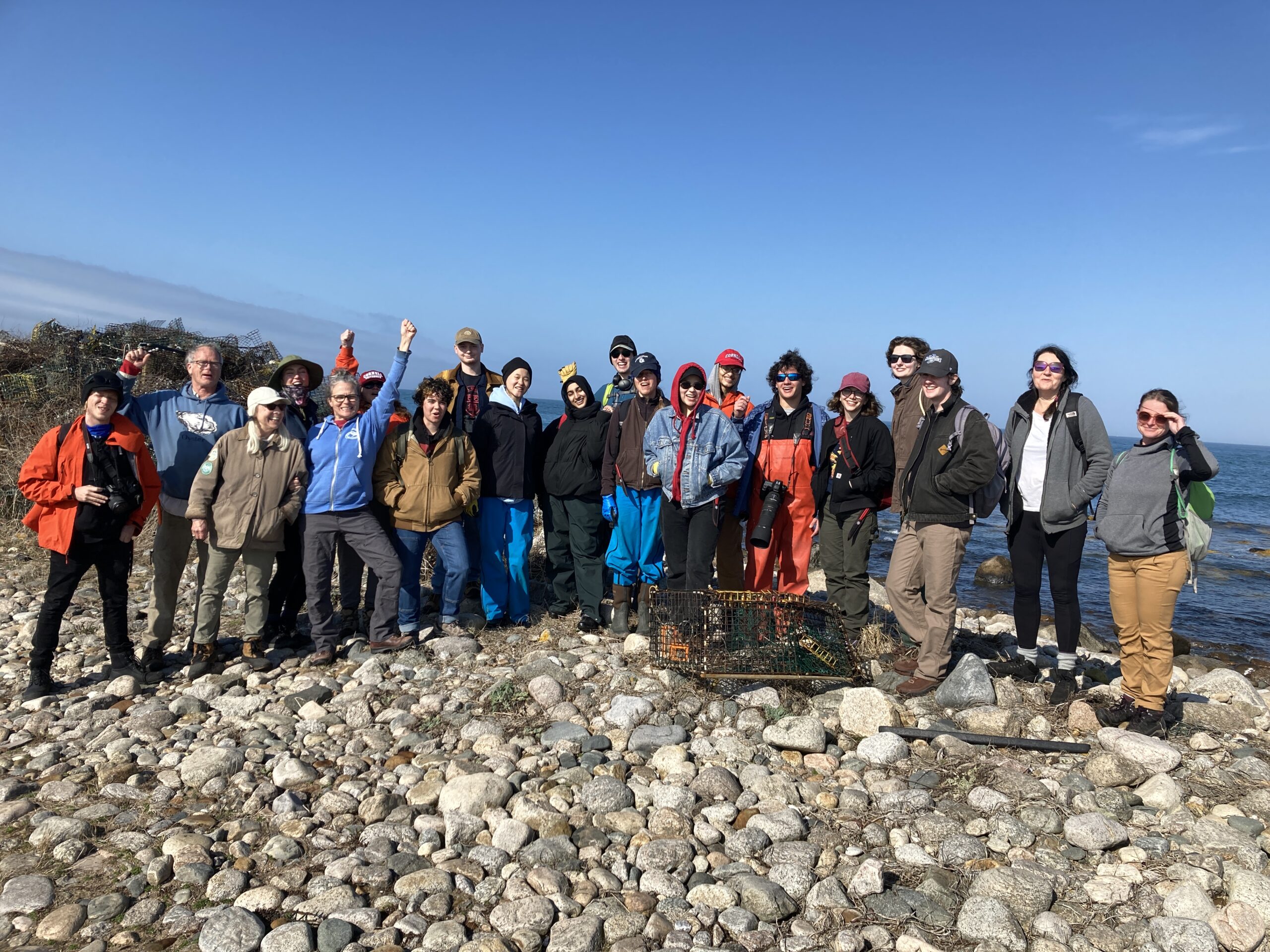By Laura Ludwig, Manager, CCS Marine Debris and Plastics Program.
I don’t really remember when I first cleaned a shoreline, but these days I do it so frequently that I sometimes forget to reflect on where I just went, how beautiful it was on location, and how much we accomplished while we were there.
Case in point: I just received a note from a stranger on Martha’s Vineyard with whom I’d spoken about cleaning up their coastline, way back in late March when I was in the throes of preparing to do an intensive island cleanup on MV’s neighbor, Cuttyhunk. This woman’s kind words reminded me that, while I’d shared information with my project team, I’d forgotten to issue a public announcement regarding our cleanup results.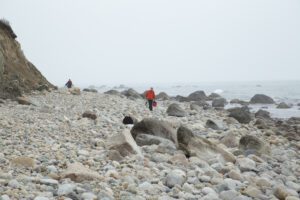
And what results they were! Thousands of pounds of debris, hundreds of lobster traps, dozens of videos an infinite number of photos — and three months have passed since then in the blink of an eye. So, here’s a long overdue accounting of the project, Removal of Ghost Fishing Gear from Cuttyhunk Shorelines.
You may have already seen the amazing photo album created by Sarah Thornington to document our weeklong Cuttyhunk project. Scroll through the album to see how much fun we had — from taking the Cuttyhunk Water Taxi, to chain-ganging the boxes of groceries into the rented apartment; from taking a guided tour of the island, to navigating the paths and shorelines on our own; and from hauling thousands of pounds of debris from all corners of the island, to sorting and counting it all — it was the best island spring break many of us had ever spent!
As for the numbers….
We inventoried everything we collected, meaning we counted bottles and gloves and traps and balloons…over 5,900 individual items!
Included in our inventory was an estimated number of pieces of rope and net — too many and too tangled to inventory precisely — easily over 1,000 pieces.
Also included was an estimated number of badly mangled lobster traps just too decrepit to count accurately. Conservatively, over 500 “junk” traps and loads more small parts and pieces of trap wire were collected.
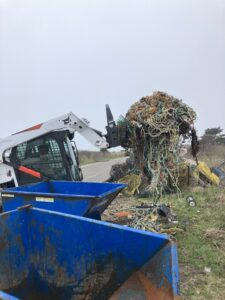 We documented 244 “good” traps, i.e. relatively intact and with ID tags, and I thank Isaac from Cornell for swiftly entering and processing those data. None of the traps were in any condition to be returned to the owner, and all were sent for recycling.
We documented 244 “good” traps, i.e. relatively intact and with ID tags, and I thank Isaac from Cornell for swiftly entering and processing those data. None of the traps were in any condition to be returned to the owner, and all were sent for recycling.
We filled two 40-yard roll-off containers (aka “dumpsters”) delivered to and from the island by Tucker Roy Marine Salvage. Cuttyhunk DPW helped us load everything.
The total weight of debris and recycling shipped to New Bedford was 12,800 lbs:
– scrap metal (wire traps without ballast) weighed 6,200 lbs and because there is a pretty good return on recycled metal it essentially paid for its own disposal costs
– rope, net, buoys, other debris, and a few wire traps we couldn’t fit in the metal bin totalled 6,600 lbs and was sent to a waste-to-energy facility.
Add to that the estimated weight of all the bricks and ballast our team painstakingly removed (1,950 lbs) and finally add in the weight of the rope, net and other debris items that went home with artists (1,000 lbs). That puts the grand total of debris collected from Cuttyhunk shoreline at over 15,750 pounds — nearly eight tons.
I am pretty sure I heard the island groan a sigh of relief when the barge pulled away with our two containers on board.
There was quite a bit of media coverage, such as an article by the Martha’s Vineyard Times announcing the project; a piece by WBZ-Channel 13 Boston, who visited us on our first day; and a great photo-journal piece by the New Bedford Standard-Times, whose photographer came out on a lovely foggy day mid-way through the week. The PBS NewsHour joined us on the day we shipped the debris to the mainland, so I expect to see something from them as well, as part of their coverage on commercial fishing and climate change issues.
I presented the results to the Cuttyhunk select board in late April, shared the project with the Southern New England Marine Debris Action Plan team in May, and created this poster for a symposium with our funding organization in mid-June — we couldn’t have done any of this without their support. Thank you, Tom and co!
Thank you to the incredible team who joined me for that memorable week:
The Cornell Crew: Annie, Josh, Anne, Anthony, Cat, Gabi, Hal, Sophie, Isaac, Kevin, Lindsay, Saumya, Suha and Zoe — your hands, hearts and brains infused this project with inspiration and momentum. The Cornell Chronicle piece captured your contributions well.
The Artists: Constance, Mark, Megan and Sarah — you brought wisdom, curiosity and no small amount of muscle to the group effort. The works you’ve created from the debris and this experience bring this project to another level altogether.
The Guides: Seth — the squeaky wheel whose attention to the issue of ghost gear on the shores of Cuttyhunk brought this entire project into the light, and whose steady vehicular and personnel support allowed us to move mountains (literally); Michelle — whose constant assistance with logistics made it all run smoothly; and the wonderful Environmental Police, Pat and co. — always standing by to assist with a boat ride or a phone call.
The Volunteer Crew: Demi from NOAA, Susan from CFRF, and Pamela from out of the blue, who cooked for us all for the entire week and always had a smile on her face!
Thank you also to the people who call Cuttyhunk “home”. Your island is truly special and worth all the work required to remove plastic marine debris from its shoreline. You gave us permission, equipment, golf carts, 4×4 trucks, housing deals, meeting space, and lots of encouragement, none of which we could have done without.
Next step is to round up all the amazing art being produced by our team artists as an outcome of this residency, and present it and the whole project to the general public, first in New Bedford at the Whaling National Historical Park, and then out on Cuttyhunk the weekend of their summer island cleanup. I hope you get a chance to see it.
And I hope to be back here before three more months pass, to highlight a few more adventures soon.
 Removal of Ghost Fishing Gear from Cuttyhunk Shorelines is supported by Southeast New England Program
Removal of Ghost Fishing Gear from Cuttyhunk Shorelines is supported by Southeast New England Program 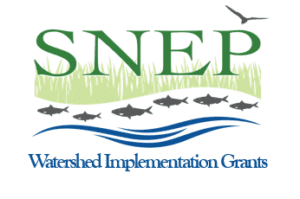 (SNEP) Watershed Implementation Grants, funded by the U.S. Environmental Protection Agency (EPA) through a collaboration with Restore America’s Estuaries (RAE). For more on SNEP Watershed Implementation Grants, see www.snepgrants.org
(SNEP) Watershed Implementation Grants, funded by the U.S. Environmental Protection Agency (EPA) through a collaboration with Restore America’s Estuaries (RAE). For more on SNEP Watershed Implementation Grants, see www.snepgrants.org


